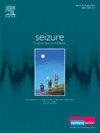Educational outcomes associated with prenatal exposure to antiseizure medications: A systematic literature review and meta-Analysis
IF 2.8
3区 医学
Q2 CLINICAL NEUROLOGY
引用次数: 0
Abstract
Objective
To systematically review and meta-analyse evidence of the associations between prenatal exposure to antiseizure medications (ASMs) and educational outcomes in childhood, including educational difficulties, learning difficulties and academic performance.
Methods
We conducted a systematic review following the PICOS framework and PRISMA guidelines. MEDLINE (Ovid), CINAHL, PubMED, ERIC, and PsycINFO databases, along with Google Scholar, were searched from inception to 28 June 2024. Study quality was assessed using the Newcastle-Ottawa Scale and ROBINS-E. Relevant outcomes included record of special education needs, school-related behavioural problems, learning difficulties, and examination scores in core academic subjects. Pooled estimates were derived where appropriate and bias and heterogeneity assessed using funnel plots, Egger’s tests, and I2 tests.
Results
Seventeen studies (12 cohort, 5 case-control) were included, encompassing 854,142 participants. Pooled estimates indicated that prenatal exposure to ASMs was associated with increased educational difficulties (RR 1.3, 95 % CI 1.01–1.69, p = 0.04), with sodium valproate showing the strongest association (RR 2.38, 95 % CI 1.25–4.53, p = 0.01). Carbamazepine and other first-generation ASMs showed no significant associations. Narrative findings suggested associations between newer-generation ASMs and educational difficulties, but limited data precluded quantitative synthesis. Studies assessing academic outcomes suggested lower academic performance among children exposed to sodium valproate or ASM polytherapy but could not undergo meta-analysis due to methodological heterogeneity.
Conclusions
Prenatal exposure to first-generation ASMs, especially sodium valproate, was associated with increased educational support needs. Newer-generation ASMs appear to have a more favourable risk profile, though evidence remains limited, underscoring the need for further high-quality research to inform clinical practice.
教育结果与产前抗癫痫药物暴露相关:系统文献回顾和荟萃分析。
目的:系统回顾和荟萃分析产前抗癫痫药物(asm)暴露与儿童教育成果(包括教育困难、学习困难和学业成绩)之间的关系。方法:我们按照PICOS框架和PRISMA指南进行了系统综述。MEDLINE (Ovid)、CINAHL、PubMED、ERIC和PsycINFO数据库以及谷歌Scholar从创建到2024年6月28日进行了检索。研究质量采用纽卡斯尔-渥太华量表和ROBINS-E进行评估。相关结果包括特殊教育需要的记录、与学校有关的行为问题、学习困难和核心科目的考试成绩。在适当的情况下得出汇总估计,并使用漏斗图、Egger检验和I2检验评估偏倚和异质性。结果:纳入17项研究(12个队列,5个病例对照),共854,142名受试者。综合估计表明,产前暴露于asm与教育困难增加有关(RR 1.3, 95% CI 1.01-1.69, p = 0.04),其中丙戊酸钠表现出最强的相关性(RR 2.38, 95% CI 1.25-4.53, p = 0.01)。卡马西平与其他第一代asm无显著相关性。叙述性研究结果表明,新一代asm与教育困难之间存在关联,但数据有限,无法进行定量综合。评估学习结果的研究表明,接受丙戊酸钠或ASM综合治疗的儿童的学习成绩较低,但由于方法学的异质性,无法进行荟萃分析。结论:产前暴露于第一代asm,特别是丙戊酸钠,与教育支持需求增加有关。新一代asm似乎具有更有利的风险概况,尽管证据仍然有限,强调需要进一步的高质量研究来为临床实践提供信息。
本文章由计算机程序翻译,如有差异,请以英文原文为准。
求助全文
约1分钟内获得全文
求助全文
来源期刊

Seizure-European Journal of Epilepsy
医学-临床神经学
CiteScore
5.60
自引率
6.70%
发文量
231
审稿时长
34 days
期刊介绍:
Seizure - European Journal of Epilepsy is an international journal owned by Epilepsy Action (the largest member led epilepsy organisation in the UK). It provides a forum for papers on all topics related to epilepsy and seizure disorders.
 求助内容:
求助内容: 应助结果提醒方式:
应助结果提醒方式:


